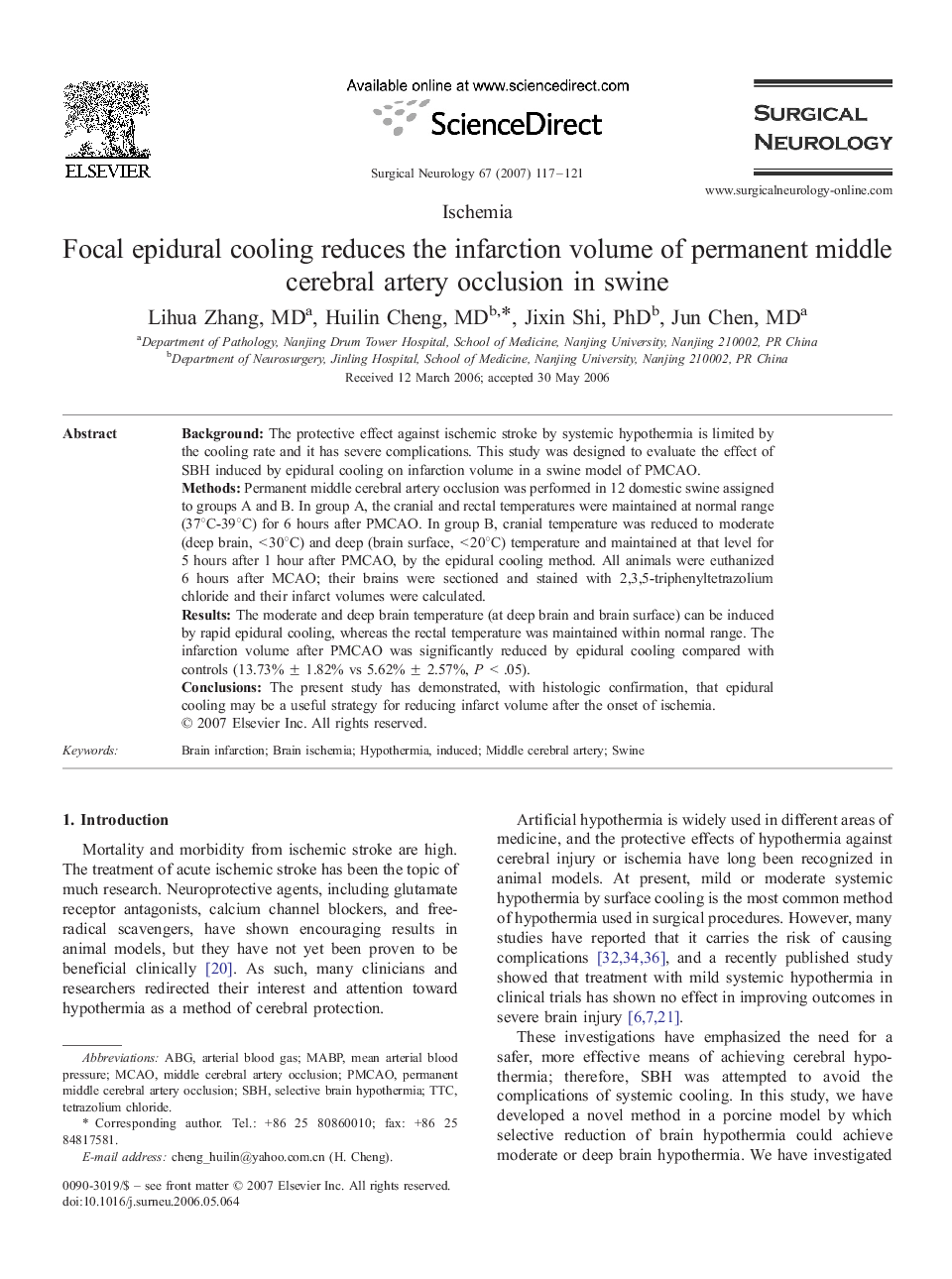| Article ID | Journal | Published Year | Pages | File Type |
|---|---|---|---|---|
| 3093593 | Surgical Neurology | 2007 | 5 Pages |
BackgroundThe protective effect against ischemic stroke by systemic hypothermia is limited by the cooling rate and it has severe complications. This study was designed to evaluate the effect of SBH induced by epidural cooling on infarction volume in a swine model of PMCAO.MethodsPermanent middle cerebral artery occlusion was performed in 12 domestic swine assigned to groups A and B. In group A, the cranial and rectal temperatures were maintained at normal range (37°C-39°C) for 6 hours after PMCAO. In group B, cranial temperature was reduced to moderate (deep brain, <30°C) and deep (brain surface, <20°C) temperature and maintained at that level for 5 hours after 1 hour after PMCAO, by the epidural cooling method. All animals were euthanized 6 hours after MCAO; their brains were sectioned and stained with 2,3,5-triphenyltetrazolium chloride and their infarct volumes were calculated.ResultsThe moderate and deep brain temperature (at deep brain and brain surface) can be induced by rapid epidural cooling, whereas the rectal temperature was maintained within normal range. The infarction volume after PMCAO was significantly reduced by epidural cooling compared with controls (13.73% ± 1.82% vs 5.62% ± 2.57%, P < .05).ConclusionsThe present study has demonstrated, with histologic confirmation, that epidural cooling may be a useful strategy for reducing infarct volume after the onset of ischemia.
